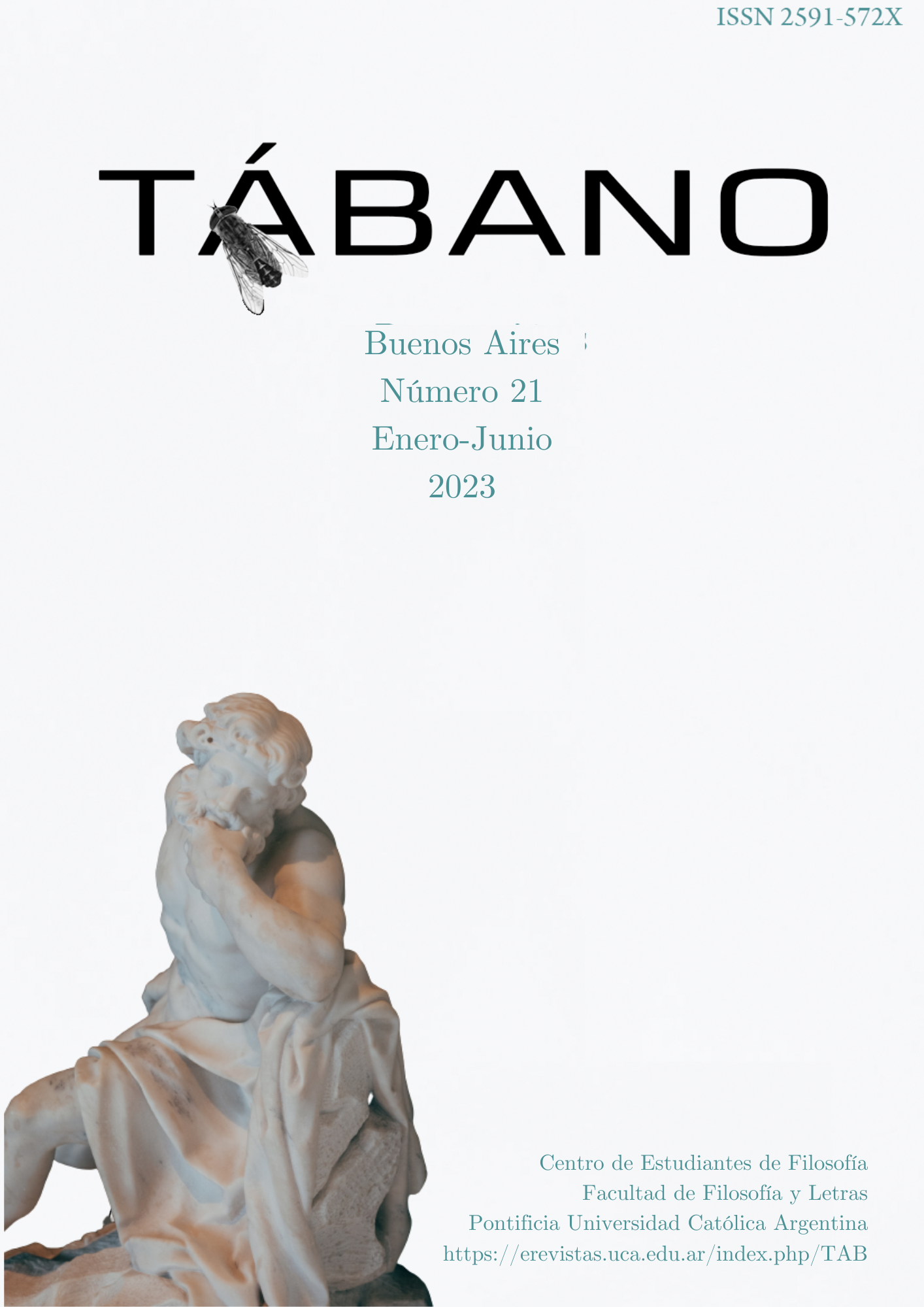Photogénie o qué expresa la imagen del cine mudo
DOI:
https://doi.org/10.46553/tab.21.2023.p64-80Palabras clave:
Fotogenia, filosofía del cine, Louis Delluc, Jean Epstein, imagen cinematográfica.Resumen
La finalidad de esta reflexión es establecer las bases de la expresión cinematográfica, es decir, qué medios utiliza el cine para expresarse. El enfoque de este trabajo estará en la imagen cinematográfica y su expresión por medio de la fotogenia. El concepto de fotogenia [photogénie] es de interés ya que, tal como lo remarca Louis Delluc, “la fotogenia es la ley del cine”. Asimismo, se considerará la manera en la que Jean Epstein retomará los esbozos intelectuales de Delluc y buscará señalar qué hace a una imagen fotogénica y por qué el cine hace uso de ella imagen para expresarse.
Descargas
Citas
Artaud, A. (1994). El cine. Madrid: Alianza.
Bullot, E. (2012). Thoughts on photogénie plastique. En Keller, S. (ed.), Jean Epstein Critical Essays and New Translations. Ámsterdam: Amsterdam University Press.
Challine, E; Gauthier, C. (2019). La photogénie, pensée magique. En Marie Gispert et Catherine Méneux (dir.), Critique(s) d’art: nouveaux corpus, nouvelles méthodes (pp. 418-437). Paris: HiCSA.
Darhuys, G. (1927). Jaques de Baroncelli. En Cinéma, n.1, pp. 24-25.
Deleuze, G. (2013). Cine I: la imagen-movimiento. Barcelona: Paidós.
Deleuze, G. (2016). Cine II: La imagen-tiempo. Barcelona: Paidós.
Deleuze, G. (2009). Cine I. Buenos Aires: Cactus.
Delluc, L. (1919). Cinéma et Cie. París: Bernard Grasset Editeur.
Delluc, L. (1920). Photogénie. París: M. de Brunoff.
Epstein, J. (1974). Écrits sur le cinéma, vol. I. París: Éditions Seghers
Epstein, J. (2013). El cine del diablo. Buenos Aires: Cactus.
Epstein, J. (2015). La inteligencia de una máquina: una filosofía del cine. Buenos Aires: Cactus.
Hauser, A. (1978). Historia social del arte y literatura, vol. 3. Madrid: Guadarrama.
Liebman, S. (2012). Novelty and Poiesis in the Early Writings of Jean Epstein. En Keller, S. (ed.), Jean Epstein Critical Essays and New Translations. Ámsterdam: Amsterdam University Press.
Moholy-Nagy, L. (2018). Pintura, fotografía, cine. Buenos Aires: Buchland.
Simondon, G. (2007). El modo de existencia de los objetos técnicos. Buenos Aires: Prometeo.
Simondon, G. (2014). Curso de la percepción. Buenos Aires: Cactus.
Wall-Romana, C. (2013). Jean Epstein: corporeal cinema and filme philosophy. Manchester: Manchester University Press.
Descargas
Publicado
Cómo citar
Número
Sección
Licencia



